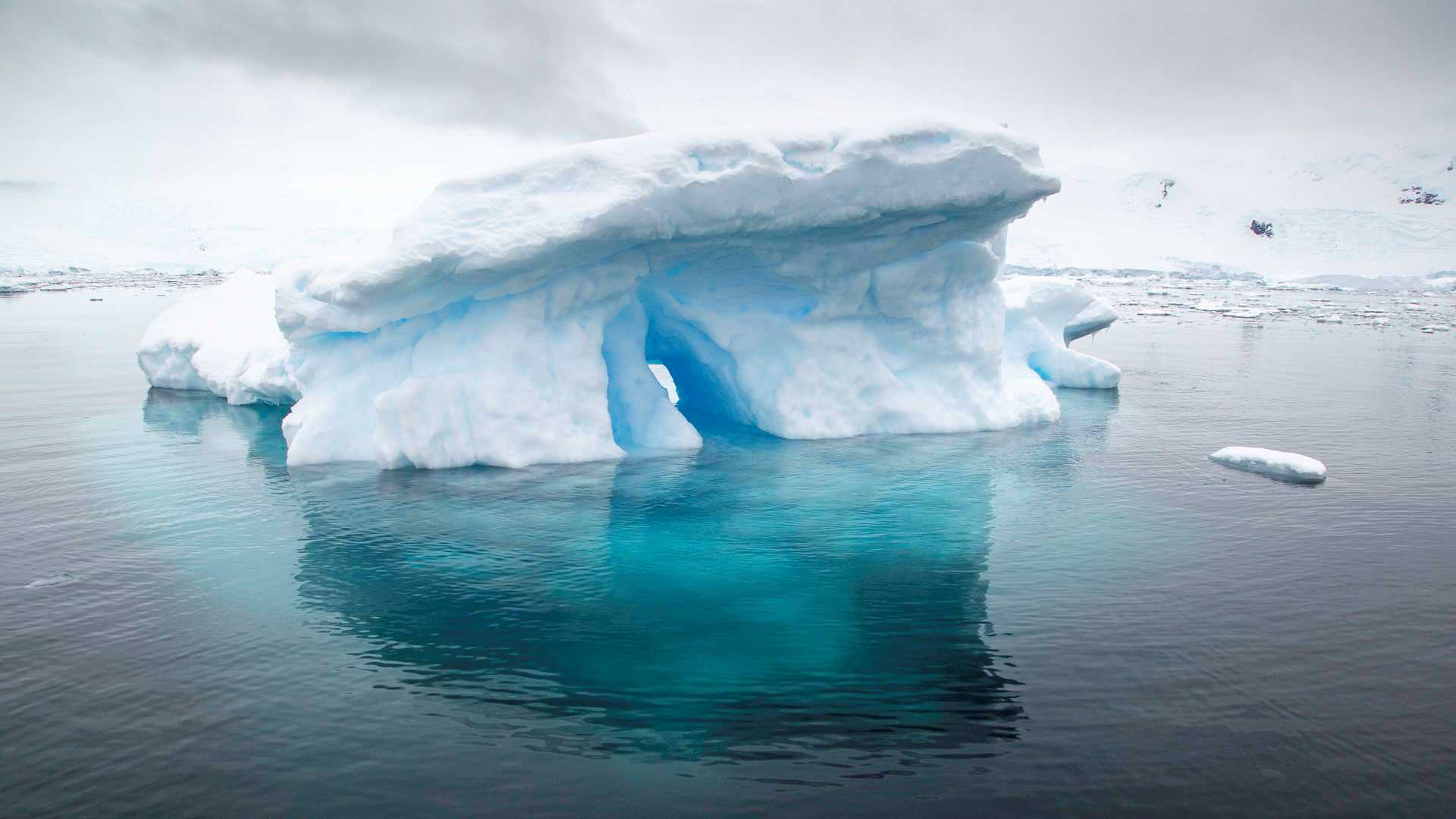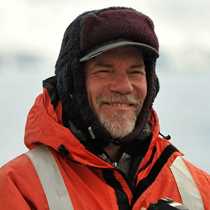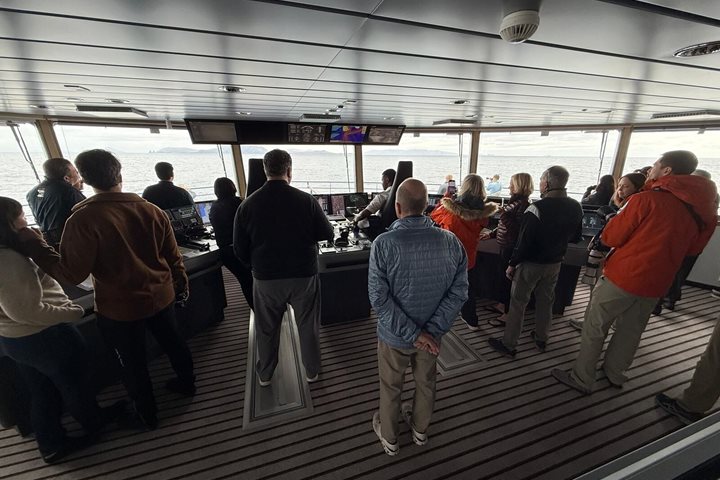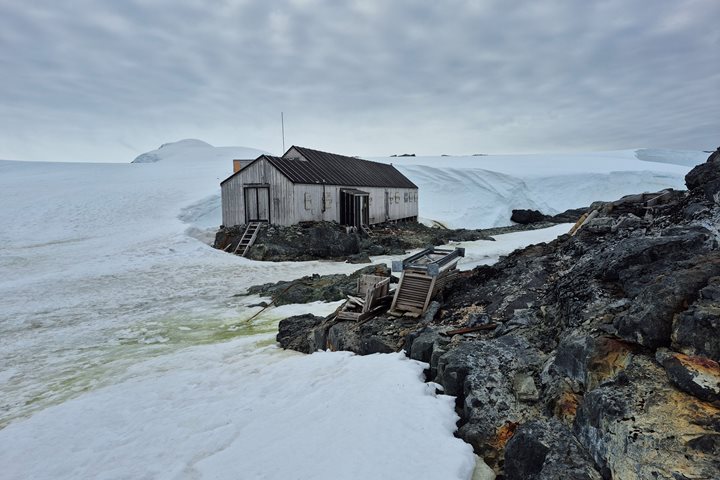Antarctica is often called The White Continent, and that’s hard to argue with. Beautiful white snow cloaks glaciers tumbling down the steep shoulders of the mountains that seem to spring up out of the sea. The pack ice, the frozen ocean, is often a very pure, clean white. But this simple statement obscures the subtle reality. Antarctica is rich in color, everywhere you look. The dark black-blue-green of the sea itself. The cobalt sky that appears between the breaking storm clouds. The pink and rose and glowing orange of the sunsets. And the blue of the ice. It is ice that truly defines Antarctica, and its blue radiance is the most beautiful color I have ever seen, anywhere in the world.
2/28/2025
Read
National Geographic Resolution
Northbound Drake Passage, Cape Horn, and the Beagle Channel
This morning, we had a later start than usual after a late night enjoying the crew show. Our galley team gifted us with a fulfilling brunch. We then had a brilliant forum about climate change with the participation of our panel of experts onboard. Afterward, our expedition leader called us to the bow to see Cape Horn, which was only a few miles ahead. The good weather allowed us to have a smooth and fast crossing, allowing extra time to swing by Cape Horn, the most southern tip of the Americas. Over the PA system, Steven provided a very interesting description of the historical importance of this area, then Pablo read a beautiful poem, a memorial to the seaman lost at sea. We could see the monument in the distance, two metal sheets that depict an albatross in flight. During the afternoon, we enjoyed Madalena’s presentation about Women in Antarctica. This was an incredible voyage through the struggles and delays of allowing women to participate in science and logistics in Antarctica. We entered the Beagle Channel around 17:00 and we encountered black-browed albatrosses, cormorants, dolphins, and whales. On our final approach to the beautiful city of Ushuaia, we passed by Les Eclaireurs Lighthouse and some of the seals that live in the Bridges Islands Archipelago.







